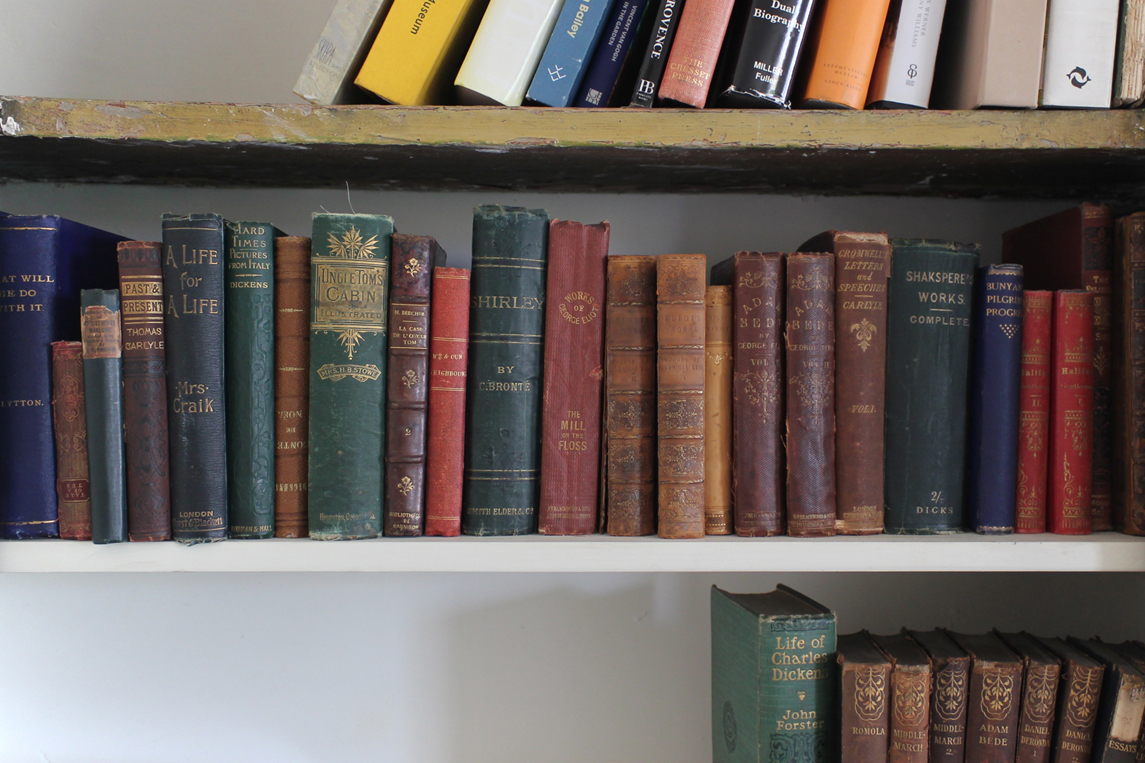Vincent and His Books

This text was donated by Willem-Jan Verlinden to the Van Gogh House in October 2021, to be published in conjuection with his lecture ‘How I Love London: Walking through the city with Anna and Vincent van Gogh’.
Find out more about the event through the link below:
Willem-Jan Verlinden (b. 1971) was born in the town of Helvoirt, went to school in ’s-Hertogenbosch, and studied art history in Leiden. Earlier this year his book ‘The Van Gogh Sisters’ was published by Thames & Hudson in the UK and the US, an extended version of the Dutch edition from 2016. Verlinden has also written about Van Gogh’s English years, co-authoring a book with Kristine Groenhart, ‘Hoe ik van Londen houd: Wandelen door het Londen van Vincent van Gogh’ (‘How I Love London: Walking through Vincent van Gogh’s London’, published in 2013.
When Vincent van Gogh lived in London, working for the art dealer Goupil on Southampton Street, he spent his free time in a couple of ways: he walked a lot, within and outside the borders of London, and visited museums like The National Gallery, The British Museum, the Dulwich Gallery and South Kensington Museum (since 1899 the Victoria and Albert Museum). He also wrote copious amounts of letters to family and friends back in the Netherlands and read a lot of English books and magazines. In his London years Vincent got familiar with English art and with English literature.
Vincent van Gogh actually had two talents. Besides being a painter, he was also a writer. The literary quality of the more than 900 archived letters and the praise he received for them posthumously are a testament to this. W.H Auden wrote, almost 70 years later, in the introduction to ‘Calm Even in the Catastrophe. The Complete Letters of Vincent Van Gogh’ (1959) : ‘‘Few painters read books and fewer can express in words what they are up to. Van Gogh is a notable exception: he read voraciously and with understanding, he had considerable literary talent of his own, and he loved to talk about what he was doing and why.”
His talent for writing does not come out of the blue: no writer becomes a good writer without reading a lot first. And that is what he did, while he was young and living with his parents, but particularly when he moved out of his childhood home. As a young adult he loved Hans Christian Anderson and German romantics like Goethe and Heine. Some letters, written in his twenties, deal more with literature than art. Strictly speaking Vincent was foremost a reader, then a writer, and only later, since1880, a painter.
On the 7th of August 1873 Vincent wrote from London about a poet he had just discovered: ‘The last few days I’ve enjoyed myself by reading the poems of John Keats; he is, I believe, a poet who isn’t very well known in the Netherlands. – He is adored by the painters here & that is how I started reading him.’
Since his time in England an increasing number of books and writers surfaced in Vincent’s letters. He mentions Charles Dickens, who he particularly adored because of his sharp eye for the plight of the poor, in 54 of them. Vincent loved books like Oliver Twist, A Christmas Carol and The Pickwick Papers. Also Harriet Beecher-Stowe, already famous for Uncle Tom’s Cabin, and Shirley by Currer Bell (pseudonym of Charlotte Brontë), were mentioned frequently. And Vincent (and his sister Elizabeth) were great admirers of the controversial writer George Eliot: they read Adam Bede, Felix Holt, The Mill on the Floss and, of course, Middlemarch.
Many other English and American writers made an appearance in the letters: Thomas Carlyle, H.W. Longfellow, William Shakespeare and Walt Whitman for instance. When he moved to Paris, and later to Arles, French were mentioned: Emile Zola, Guy de Maupassant, Gustave Flaubert, Victor Hugo and many others.
Next to books, he read a lot of magazines. He would walk to 190 Strand every week to look at the display cases of the printers of The Graphic and The Illustrated London News. Of The Graphic he bought 212 second-hand copies that all appeared between 1870 and 1880. When Charles Dickens died, on the 9th of June 1870, The Graphic published a drawing by Samuel Luke Fildes: and empty chair in the library of the writer. Van Gogh admired the drawing immensely and took it with him on his many travels, and mentioned it in many letters. He would start painting empty chairs himself later on, including one with two books and a candle stand on it – the one made for Gauguin.
Vincent kept writing about literature until his death in 1890. His letters make clear that he wasn’t simply interested in the books themselves, but that the artist behind the work and his or her motives were equally fascinating to him. He was convinced that an artwork (whether it was a book or a painting) was better understood if one made an effort to understand its creator.